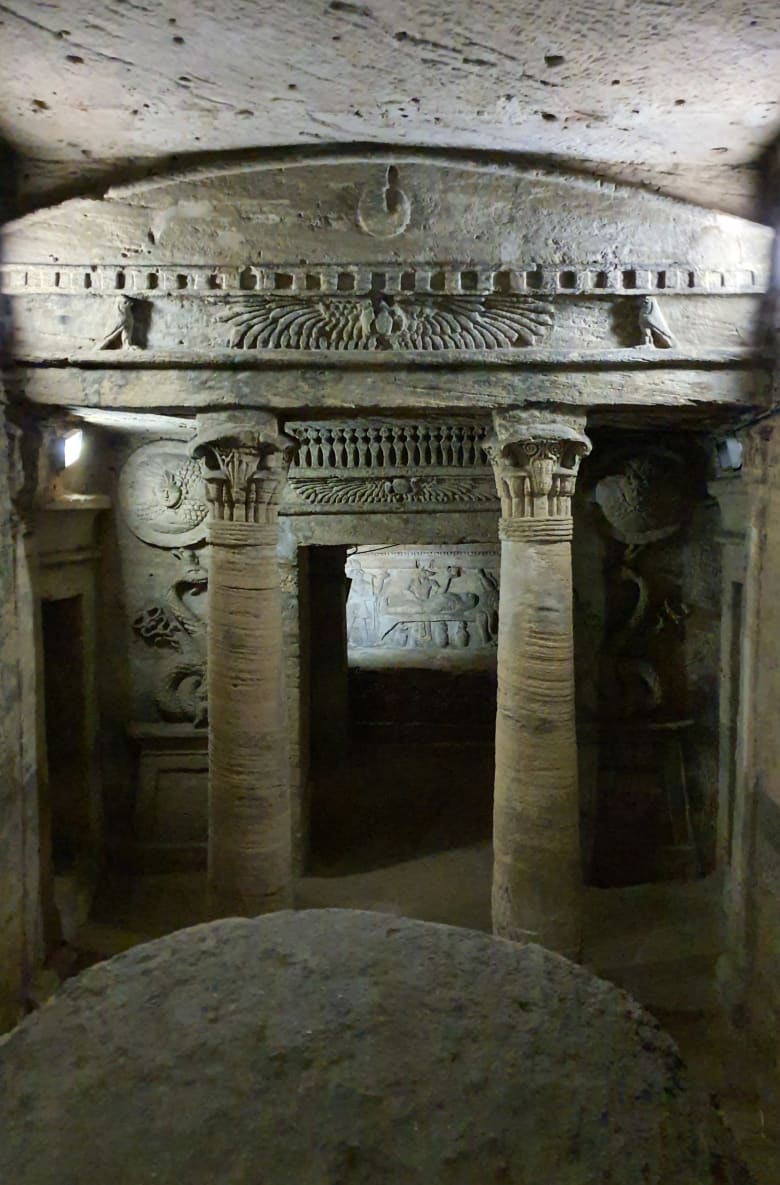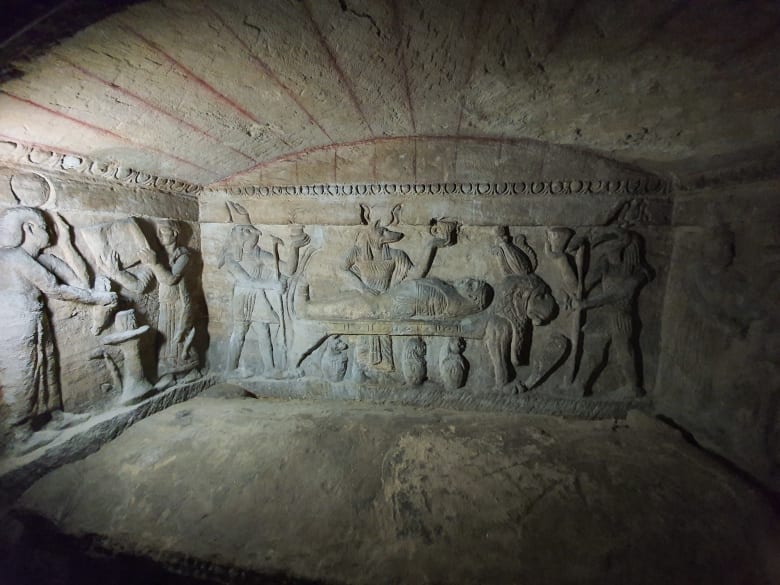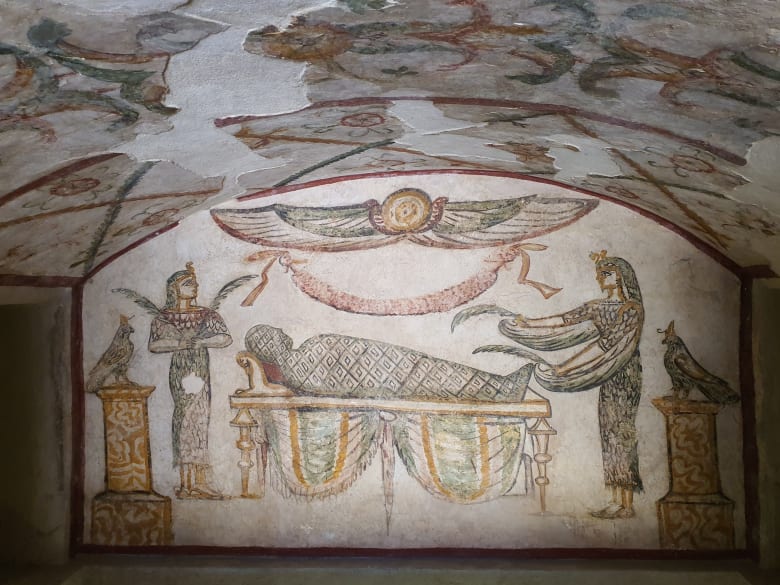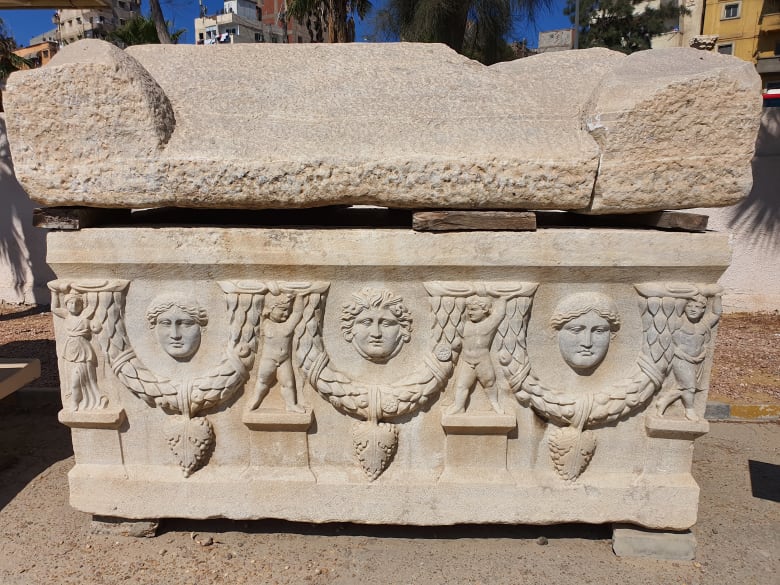Nourhan El-Kalawy - CNN

The city of Alexandria in Egypt is rich in many surviving monuments, which carry the fragrance of history when visiting and viewing them, and among the most important of them are the tombs of Kom Al-Shuqafa from the Roman era.
These ancient tombs are located in the “Kom al-Shaqafa” area in the “Karmouz” neighborhood, west of Alexandria, and the area was called by this name because of the large number of pottery remains that were accumulating in this place, according to what was mentioned on the official website of the Egyptian Ministry of Antiquities.
The history of Kom al-Shuqafa tombs dates back to the period between the first and second centuries AD, according to the Egyptian Ministry of Antiquities website.

The Kom al-Shuqafa tombs were discovered by pure chance in September 1900, when a donkey fell into an underground pit, becoming the largest known Roman burial site in Egypt, according to the Discover Egypt website.
The ancient tombs include a spiral staircase leading to three levels carved into the rock, about 20 meters deep, under the surface of the earth, according to the Egyptian Ministry of Tourism and Antiquities website.

These ancient tombs contain coffins decorated with wreaths of grape leaves, grape clusters, and the heads of the Medusa, in addition to the lokli, meaning small burial niches are rectangular and carved into the walls used in burials, as well as other small square niches executed in the walls, where the vessels containing Human remains.

The Egyptian photographer Omar Al-Diabi explains, to CNN in Arabic, that he decided to visit the tombs of Kom Al-Shuqafa in Alexandria, to document that important period of Roman history in Egypt, and to discover the fact that people in this period think about death and other life, as well as the extent of the overlap between two ancient civilizations in one place. .
Al-Diabi believes that the importance of this archaeological site is that it is a model for the tombs of "Al Kata Kump", a name given to graves dug under the surface of the earth, and this type of tombs spread in the first three centuries AD.

Al-Diabi points out that these ancient tombs, which are similar in style to the Christian "Catacomb" tombs in Rome, include Pharaonic, Greek, and Roman arts and architecture, and many details of religious rituals.
Al-Diabi describes the feelings that he had at the moment of his descent to the ancient tombs, with astonishment and relative fear of what he saw of the inscriptions depicting the ancient Egyptian scenes between the corridors of the tombs of Kom al-Shuqafa, which is an intriguing scene and questions to find out everything related to these tombs, and how the dead were buried in them.

During the tour, Al-Diabi was able to learn about funeral customs such as gathering the family of the deceased every day of the week, spending a day in the cemetery, increasing the deceased for fear of a sense of loneliness, as well as the belief that the soul returns from the other world to meet its loved ones.
Al-Diabi advises those wishing to visit, accompanied by a specialist, to get an idea of the history of this unique form of archaeological tombs.